| Share |  |
 | |||
Sugar Bondage - Why You Need to be Free - Part Four
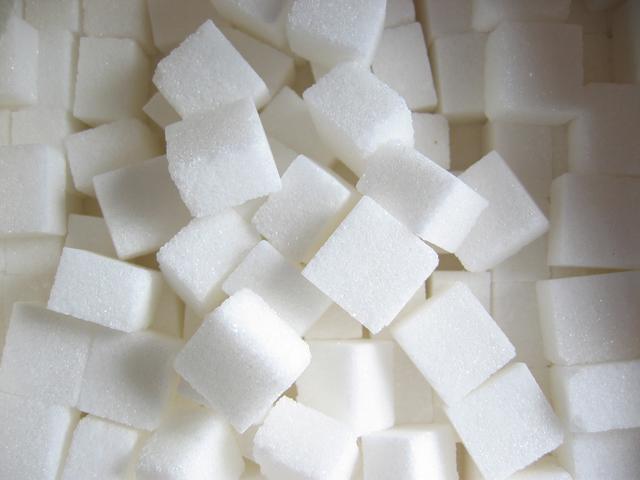 It is very rare indeed to find those who can easily abstain from sugar despite knowing its harmful effects to our bodies. Why is this? Sugar is an addictive substance, even more so than cocaine or alcohol, as proven by many research studies. Many do not consider themselves “addicts” because the consumption of sweet foods and beverages is so socially acceptable and common in the standard American diet. Since “everyone is doing it”, eating sugar is often not even viewed as a problem - at least not to the same extent as nicotine or alcohol addiction would be viewed. In this final article, we will look at why we crave sugar and refined carbohydrates. We will also discuss how to tell if you are addicted to sugar, practical ways to break the addiction cycle, and how to stay free once you break free.
It is very rare indeed to find those who can easily abstain from sugar despite knowing its harmful effects to our bodies. Why is this? Sugar is an addictive substance, even more so than cocaine or alcohol, as proven by many research studies. Many do not consider themselves “addicts” because the consumption of sweet foods and beverages is so socially acceptable and common in the standard American diet. Since “everyone is doing it”, eating sugar is often not even viewed as a problem - at least not to the same extent as nicotine or alcohol addiction would be viewed. In this final article, we will look at why we crave sugar and refined carbohydrates. We will also discuss how to tell if you are addicted to sugar, practical ways to break the addiction cycle, and how to stay free once you break free.
 The Addiction Cycle
The Addiction Cycle
As discussed in the second article of this series, eating sugar shoots up blood sugar levels, triggering a spike in the hormone insulin, which is needed to get glucose from the bloodstream into the cells for energy production. When we consume sugar or refined carbohydrates, the rush of high glucose levels gives us a temporary spurt of energy. However, too much sugar in the blood at one time sends a signal to the pancreas to pump out amounts of insulin to lower glucose levels so that the brain is protected from excess blood sugar.
The problem is that insulin is pumped out in such large amounts that blood sugar levels can then become too low. Quick drops in blood sugar levels result in a “crash”, or loss of energy, and the body then craves another “hit”, so to speak. When this craving is indulged, the cycle repeats itself, creating a “yo-yo” or “roller coaster” effect of ups and downs in blood sugar levels.
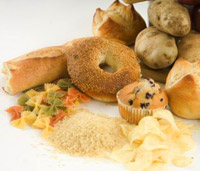 It’s Not Just the Sugar
It’s Not Just the Sugar
It is important to note at this point that it is not only refined sugar that creates this imbalance in the blood stream. What many people do not realize is that refined carbohydrates quickly convert to sugar once inside the digestive tract and produce the same effect. It is not just the cookies, cakes and other dessert items made from refined white flour that raise glucose and insulin levels. Many other popular refined grain products like breads, rolls, bagels, hamburger buns, cereals, crackers, pizza dough, tortillas, pretzels and other snack items, which are consumed in such abundance in the diets of most people today, significantly contribute to the problem.
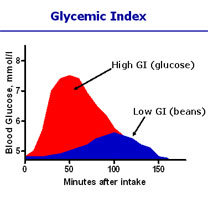 The main way to get off the blood sugar “roller coaster” is to stabilize blood sugar levels by avoiding foods with a high glycemic index. The glycemic index is a numerical scale from 0-100 that was developed to reflect how much a food raises blood sugar after its consumption in comparison with other foods. It is a beneficial tool for understanding how quickly carbohydrates in a food turn into sugar in the blood and can help a person avoid foods that release glucose into the bloodstream too quickly. The faster that high glycemic foods convert to glucose in the digestive tract, the more rapidly the blood sugar level rises and the greater amount of insulin is released by the pancreas in response to that rise. Low glycemic foods, however, are digested and absorbed more slowly and are less likely to trigger an insulin reaction. This is because they contain the needed fiber and nutrients for the breakdown and digestion of their sugars. These foods contain nutrients that can process their sugars and carbohydrates without stressing the body.
The main way to get off the blood sugar “roller coaster” is to stabilize blood sugar levels by avoiding foods with a high glycemic index. The glycemic index is a numerical scale from 0-100 that was developed to reflect how much a food raises blood sugar after its consumption in comparison with other foods. It is a beneficial tool for understanding how quickly carbohydrates in a food turn into sugar in the blood and can help a person avoid foods that release glucose into the bloodstream too quickly. The faster that high glycemic foods convert to glucose in the digestive tract, the more rapidly the blood sugar level rises and the greater amount of insulin is released by the pancreas in response to that rise. Low glycemic foods, however, are digested and absorbed more slowly and are less likely to trigger an insulin reaction. This is because they contain the needed fiber and nutrients for the breakdown and digestion of their sugars. These foods contain nutrients that can process their sugars and carbohydrates without stressing the body.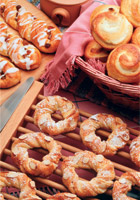 The high glycemic foods, however, do not have the proteins, fats and fiber to balance their higher amounts of sugar. Therefore, the sugar has to be handled by the body by causing the pancreas to release insulin. As we have learned, chronic high levels of insulin cause decreased insulin sensitivity (insulin resistance) and also promote the storage of fat.
The high glycemic foods, however, do not have the proteins, fats and fiber to balance their higher amounts of sugar. Therefore, the sugar has to be handled by the body by causing the pancreas to release insulin. As we have learned, chronic high levels of insulin cause decreased insulin sensitivity (insulin resistance) and also promote the storage of fat.
Another method of evaluating how a food will affect blood sugar levels is to discover the carbohydrate density of that food. Not all low glycemic foods are low in carbohydrates. If you subtract the total grams of fiber (a type of carbohydrate that does not raise glucose levels) from the total grams of carbohydrates, you will discover what is known as “carbohydrate density”. A refined grain-based food such as pasta can have a low to moderate glycemic index rating, yet be high in carbohydrates and calories. A cup of dried refined pasta, for instance, is actually equivalent to a cup of sugar in the way in which it affects glucose levels, not to mention that it has very little nutritional value. When choosing a food that will keep blood sugar levels stable and promote the best health possible, select those which nutrient dense, low on the glycemic index scale, and low in total carbohydrate density.
How Cravings are Created
Another way in which sugar creates an addictive cycle is the manner in which it over-activates the reward system of the brain, much the same as do drugs or alcohol.
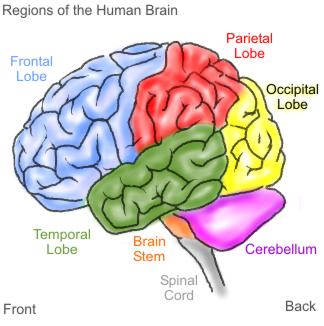
When foods high in sugar are eaten, signals are sent to the brain that cause a release of various neurotransmitters (chemical messengers) that enhance mood and the sense of pleasure. One of these neurotransmitters, serotonin, is a powerful mood enhancer and appetite regulator. Another released neurotransmitter, dopamine, is commonly associated with the pleasure system of the brain.
Dependencies in the brain are created by the regular ingestion of sugar, because the brain gets used to that boost and wants the sense of pleasure repeated. Drops in serotonin or dopamine levels, as well as blood sugar levels, send “feed me” signals to the brain. When there is overstimulation of the reward signals in the brain, normal mechanisms of self-control are over-ridden, bringing about addictive tendencies. The more of a substance that is consumed, the more is desired. These cravings for sugar or carbs are often just cravings for energy and another surge of serotonin. This scenario is particularly intensified if the person is fatigued, depressed or under stress as these are times that the body especially needs immediate energy and serotonin.
There are many other factors that contribute to the development of cravings for sugar. It begins early in life as babies are often given formula sweetened with sugar. As children grow up, the amount of sugary snacks, other treats, and beverages (not to mention all the hidden sugars contained in commonly used processed foods) set them up for sugar and carbohydrate addiction.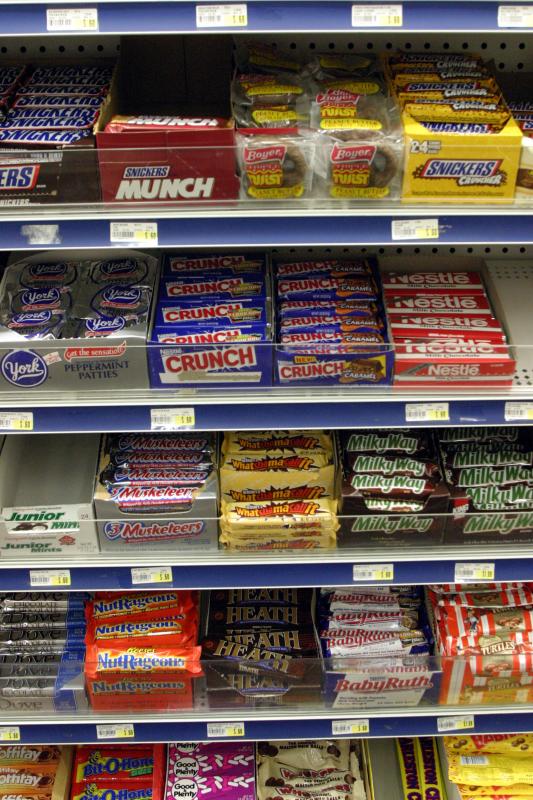
Additionally, producers of these processed foods add in addictive substances like Advanced Glycosylated End Products and High Fructose Corn Syrup, which further strengthens their addictive appeal. Then, billions of dollars are spent advertising these sugar-laden “junk” foods (though you seldom see fresh fruits and vegetables promoted) and they then are strategically placed in stores to ensure that a person’s cravings are indulged.
Symptoms of Addiction
There are numerous symptoms that may indicate a person is addicted to sugar and/or refined carbohydrates. Some of the primary ones include:
-
Not being able to go for more than a day or two without having something sweet
-
Craving or thinking about sweets even when you are not hungry
-
Having difficulty turning down desserts or sweet snacks when they are offered
-
Experiencing irritability, moodiness or anxiety if sugar is not consumed
-
Having a mid afternoon slump that only seems to be relieved by a sweet snack or drink
-
Experiencing physical symptoms of withdrawal such as headaches, drowsiness or mood swings
-
Experiencing symptoms of hypoglycemia (low blood sugar) such as weakness, shakiness, dizziness, heart palpitations, anxiety, confusion, nausea or extreme hunger
-
Consuming sweet foods when tired, stressed or emotionally down
-
Weight gain or inability to lose weight
-
Being defensive if anyone suggests you are having too much sugar
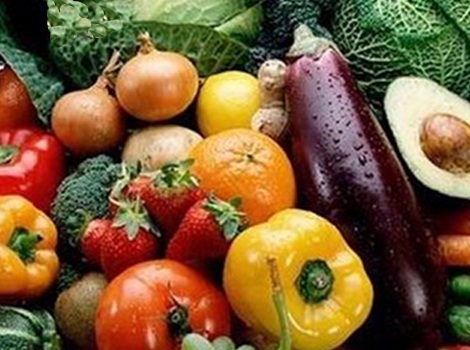 Take the Two-Week Challenge
Take the Two-Week Challenge
The two-week challenge serves both as gauge to determine if indeed you are a sugar addict as well as a means to give you a huge jump-start on breaking the physical hold that sugar’s vicious cycle has on your life. This plan basically gets the sugar “out of your system” by reducing the stored form of glucose (glucagon) as well as reducing insulin resistance. It will also change the way your taste buds perceive sugar and disrupt the appetite thermostat located in the hypothalamus so that it can be reset.
Dr. Hugo Rodier is a recognized authority in nutritional and integrative medicine and an adjunct professor of nutrition at the University of Utah School of Medicine. In his book “Sweet Death”, he relates his use of this approach with the patients in his clinical practice. He firmly believes that the root cause of much disease is brought about by the failure of cells to communicate which, in turn, is primarily induced by insulin resistance. He tells patients that he cannot help them unless they first assume responsibility to correct the imbalances in their body caused by poor diet and sugar addiction.
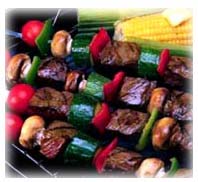 This approach basically involves cutting out every form of sugar from the diet for a period of two weeks by consuming only lean meats, poultry and fish, vegetables, eggs and nuts (tomatoes and avocados are allowed although they are sometimes classified as fruits). Raw fruits may then be added back to the diet for the next two weeks. Finally, legumes, brown rice and whole grains can be added. Beverages during this time should only consist of water (fresh lemon can be added) or fresh vegetable juices. A salad dressing may be made with olive oil, vinegar or lemon and spices such as pepper, tarragon or garlic (commercial salad dressings almost always contain some form of sugar, unhealthy oils and chemical additives).
This approach basically involves cutting out every form of sugar from the diet for a period of two weeks by consuming only lean meats, poultry and fish, vegetables, eggs and nuts (tomatoes and avocados are allowed although they are sometimes classified as fruits). Raw fruits may then be added back to the diet for the next two weeks. Finally, legumes, brown rice and whole grains can be added. Beverages during this time should only consist of water (fresh lemon can be added) or fresh vegetable juices. A salad dressing may be made with olive oil, vinegar or lemon and spices such as pepper, tarragon or garlic (commercial salad dressings almost always contain some form of sugar, unhealthy oils and chemical additives).
This is NOT an easy thing to do, especially if you are used to consuming any significant amounts of sugar and refined carbohydrates on a regular basis. It will also be hard if processed or convenience foods comprise much of your diet, because almost all of them contain some form of grain, dairy or sugar. You could think of this plan as a type of fast for it will involve the same level of commitment and discipline.
However, even though it may be difficult at first (as is the case with withdrawal from any addiction), you will be amazed at how the strong cravings will subside as your appetite thermostat is adjusted and your taste buds are retrained to enjoy the natural sweetness of various foods. Once you are accustomed to your new eating habits, you may also find that a sugar-rich dessert will be far too sweet for your taste or that you may not feel so well later if you do eat it. You will also notice good changes in the way your body functions and your energy level, not to mention that you will be multiple pounds lighter (an added bonus!).
More Tips for Beating the Addiction
Clearly, the root cause of sugar addiction is addressed and the sugar cycle is broken only when the taste buds and appetite thermostat in the hypothalamus of the brain are reset. Since they were originally set by the mind, body and taste buds becoming accustomed to sugar and refined carbohydrates as a regular part of the diet, it stands to reason that they will only be reset by getting off sugar and eating the right foods.
Here are some more basic things you can to do help yourself with diet and lifestyle changes that will assist you in that process:
-
Change your mindset and adopt a firm determination to avoid as much as possible foods containing white sugar and white flour as well as other “whites” such as white rice and pasta
-
Learn which foods are high on the Glycemic Index scale or in carbohydrate density and avoid them in your diet
-
Develop the habit of carefully reading labels of processed foods to avoid consuming hidden sugars – know what you are eating.
-
Take steps to reduce your access to refined sugars and carbohydrates by refusing to buy them or keep them in your kitchen as much as possible. It’s interesting to note that the Bible says, “…make no provision for the flesh” Romans 13:14. (NIV).
-
Start the day with a hearty breakfast rich in lean protein and complex carbohydrates so that your blood sugar levels are steady and balanced at the onset of your day.
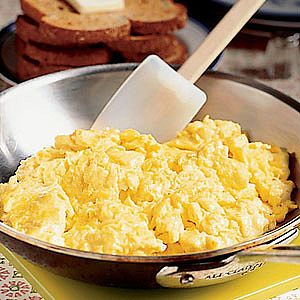
-
Eat balanced nutritious meals that consist of approximately one third lean protein and two thirds vegetables.
-
Never skip meals or allow yourself to become hungry – eat healthy foods every two to three hours (one skipped meal can lower your metabolism by 30 percent).
-
Plan for and keep healthy snacks readily available (see companion article for specific ideas).
-
Get enough sleep and rest – when the body is tired, it craves energy which can easily translate into a sugar binge.
-
Exercise as it releases pleasurable endorphins and improves insulin sensitivity.
-
Avoid all artificial sweeteners (see June, 2009 article on Healthy Sweeteners – Part One: The Not So Sweet Truth About Artificial Sweeteners to learn why).
-
Avoid stimulants like caffeine or alcohol (fermented sugar).
-
Avoid excessive salt as it creates a craving for sugar.
-
Drink plenty of water which can make you feel fuller and less prone to eat.
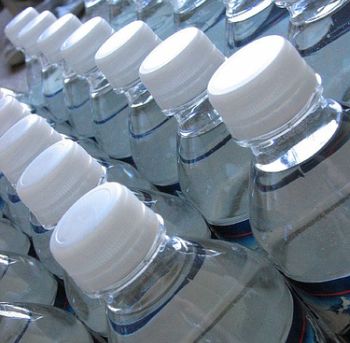
-
Take good quality nutritional supplements and herbs, especially ones that help control blood sugar levels such as chromium, manganese, zinc, vanadium, licorice root, etc.
-
Eat high fiber foods and supplement your diet with added fiber since fiber delays the absorption of sugar in the intestine.
-
Learn to cope with stress and negative emotions in a healthy way – become aware of emotional factors behind the desire for sugar.
-
Nourish the adrenal glands that help the body cope with stress.
-
Go on a buddy system – get an accountability partner to help you stick to your commitment.
-
Learn to make “healthful” treats (see companion article for ideas) and focus on enjoying all the good foods you can have rather than on what others may be eating.
-
Last, but by no means least, PRAY for the strength and grace to say “no” to the unhealthy desires and meditate on scriptures that remind you of the victory you have over destructive habits, as well as the fruit of self-control (Galatians 5:22) that you have been given as a believer.
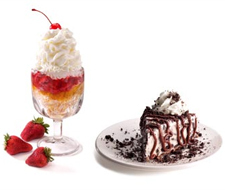
Many of the above ideas are more fully developed in this month’s companion article “Breaking Free of Sugar Addiction”, based on the book “Get the Sugar Out – 501 Simple Ways to Cut the Sugar Out of Any Diet”, by Ann Louise Gittleman.
Conclusion
Even with the implementation of these ideas, there may be occasions, such as a vacation in which you may succumb to sweet temptations. If that occurs, don’t condemn yourself, but be encouraged that “tomorrow is a new day” and get back on course.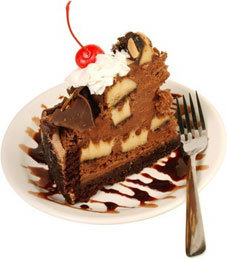 Don’t let yourself “slide” to the degree that requires you to have to break the addiction, reset your thermostat and retrain your taste buds once again, for that will only make matters more difficult for you.
Don’t let yourself “slide” to the degree that requires you to have to break the addiction, reset your thermostat and retrain your taste buds once again, for that will only make matters more difficult for you.
Make a quality decision that you will “eat to live” rather than “live to eat”, remembering that those few fleeting moments of pleasure in the taste of some rich dessert is really not worth the damage to your body and health in the long run. Enjoy being free from the bondage of sugar addiction. Whether you utilize the “two-week challenge” or find that a more gradual approach to weaning yourself off of sugar works best for you, getting free of the bondage of sugar addiction is well worth the effort for your health and well-being.
Sources:
- Sweet Death by Dr. Hugo Rodier
- Lick the Sugar Habit by Dr. Nancy Appleton
- Suicide by Sugar by Dr. Nancy Appleton
- Sugar Busters – Cut Sugar to Trim Fat by H. Leighton Steward, Morrison C. Bethea, M.D., Sam S Andrews, M.D., Luis Al. Balart, M.D.
- Get the Sugar Out 501 SimpleWays to Cut the Sugar Out of Any Diet by Ann Louise Gittleman, M.S., C.N.S.
- Going Against the Grain by Melissa Diane Smith
https://www.amtamassage.org/journal/su02_journal/bens_corner_pg2.html
Copyright © 2008-2015 Lucinda Bedogne, CNHP, CNC
Post Your Comment...
|
|
||||||||||||


